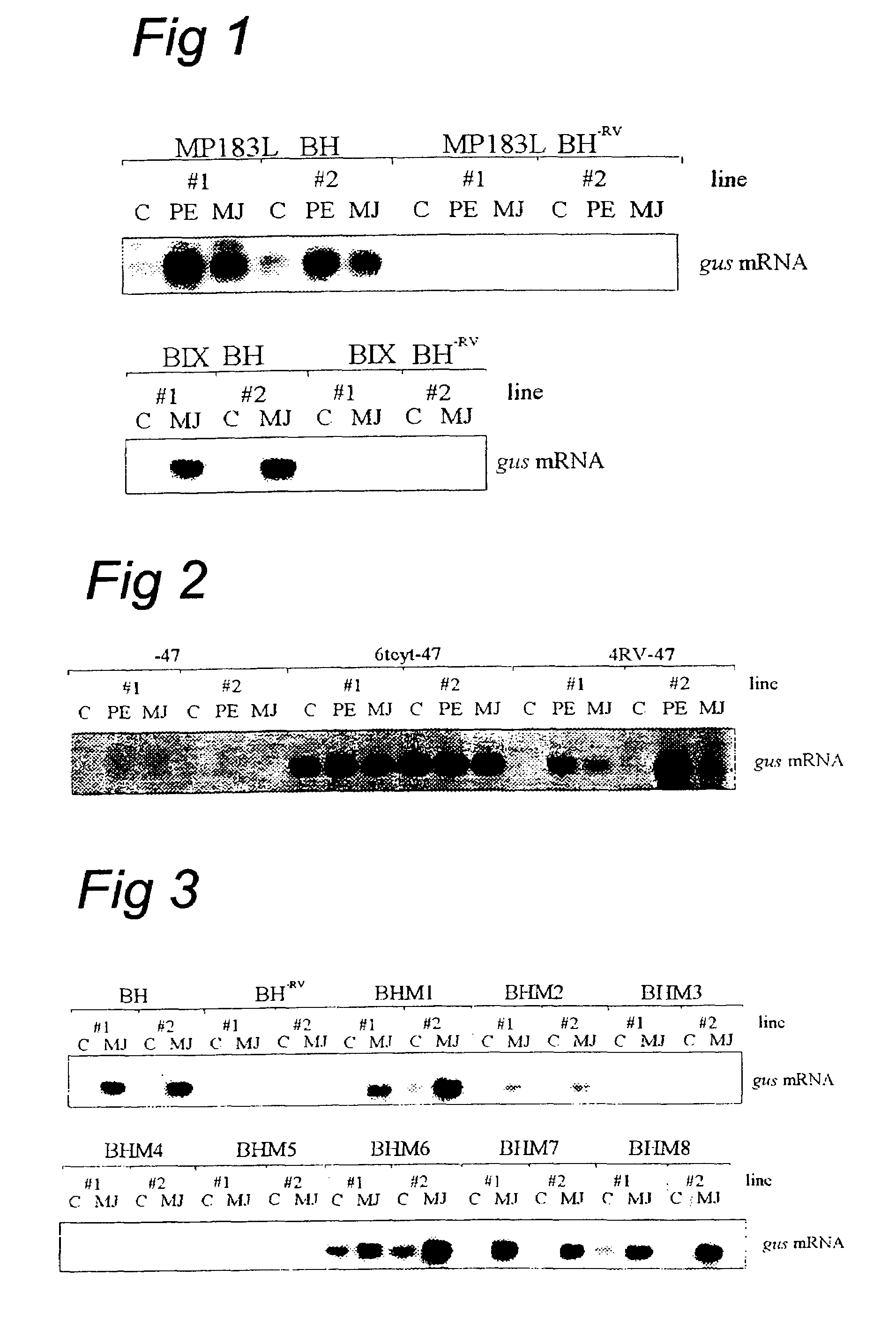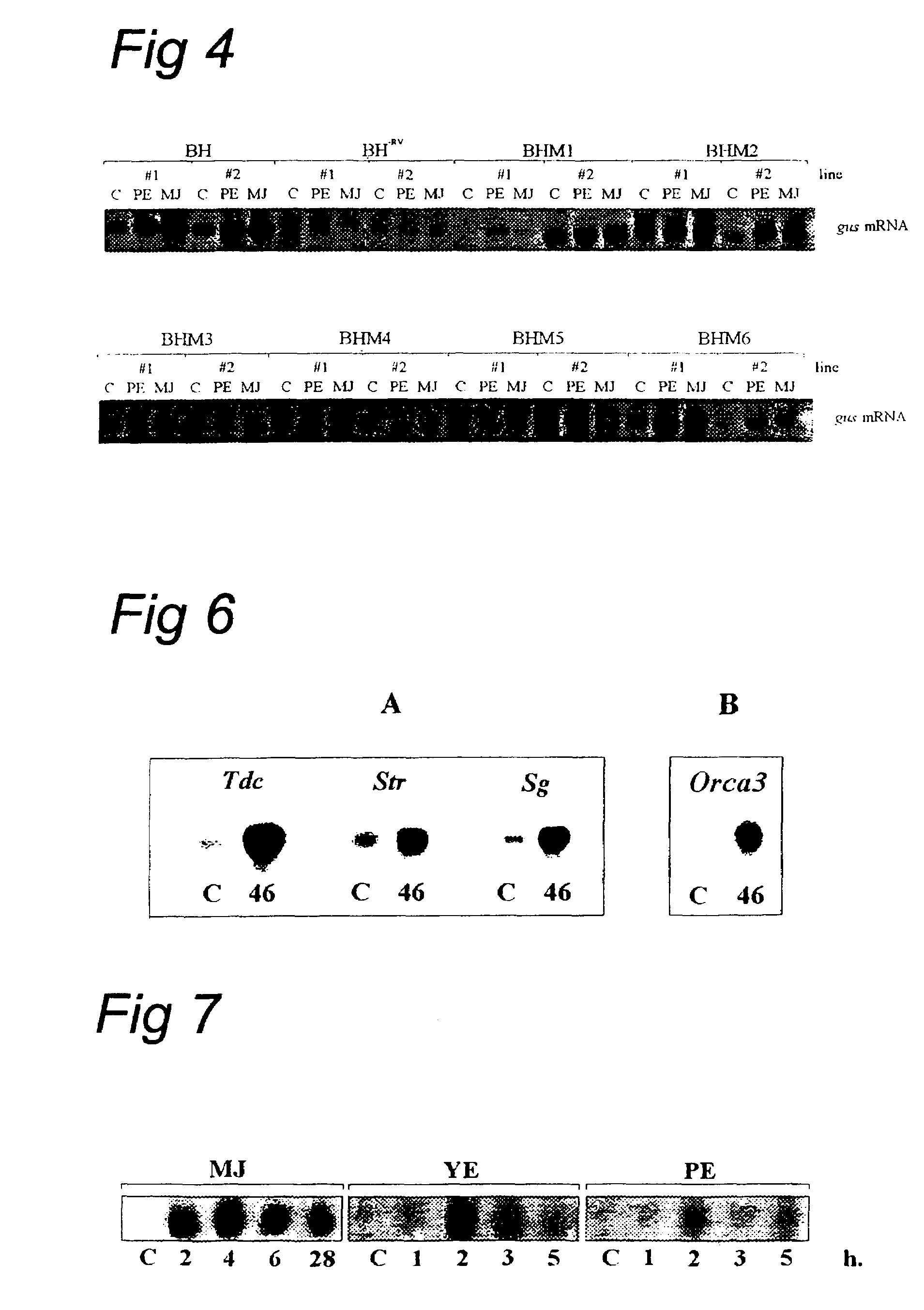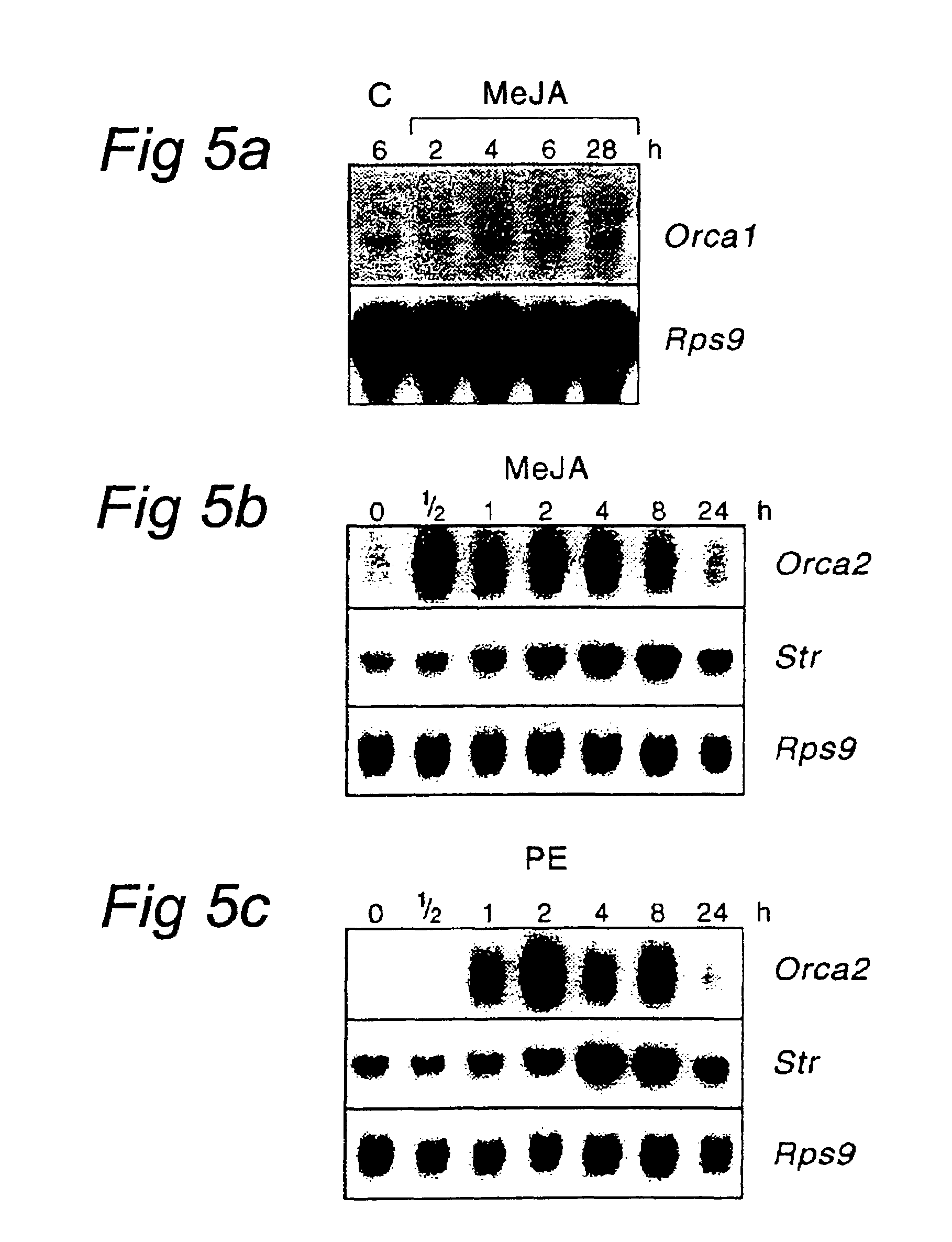Method of modulating metabolite biosynthesis in recombinant cells
- Summary
- Abstract
- Description
- Claims
- Application Information
AI Technical Summary
Benefits of technology
Problems solved by technology
Method used
Image
Examples
example 1
1.1 Identification of an Elicitor- and Jasmonate-Responsive Element in the Str1 Promoter
[0297]The RV region of the promoter of the str1 gene (DDBJ / EMBL / GenBank database accession number Y11082) of Catharanthus roseus (Madagascar periwinkle) coding for strictosidine synthase was, as described below, via promoter analysis including detailed scanning mutagenesis, identified as an elicitor- and jasmonate-responsive element.
[0298]The BglII / HincII fragment (BH) of the Str1 promoter and a BH fragment in which the RsaI / AvaII fragment (RV) was deleted (BH−RV) were introduced as BglII / SalI fragments into the GusSH vector consisting of pBluescript SK+ carrying the β-glucuronidase reporter gene. These Str1 promoter derivatives fused to the gusA gene were introduced into two different C. roseus cell lines. Cell line MP183L was transformed via particle bombardment, whereas cell line BIX was transformed via an improved Agrobacterium strain (see example 4.1). For Agrobacterium-mediated transformati...
example 2
Cloning of ORCA-1 and 2
[0305]The RV region was, as described in Example 1, identified as an elicitor- and jasmonate-responsive element in the Str1 promoter. Use of the RV element as bait in a one-hybrid transcription factor screening resulted in the isolation of 17 cDNA clones that corresponded to two different mRNA species, encoding proteins belonging to the APETALA2 domain class of transcription factors. They were named ORCA-1 and 2 (for Octadecanoid-Responsive Catharanthus AP2).
[0306]The RV region of the Str1 promoter (DDBJ / EMBL / GenBank database accession number Y10182) was cloned as a RsaI / AvaII fragment into the SmaI / EcoRV sites of pIC20H and tetramerized using the enzymes BamHI / BglII. The tetramer was cloned as a BamHI / BglII fragment into the BamHI site of pHIS3NX. The tetramer-HIS3 gene fusion was transferred as a NotI / XbaI fragment to the yeast integration plasmid pINT1.
[0307]The resulting plasmid was linearized with NcoI and introduced into yeast strain Y187. Recombinants w...
example 3
Expression of ORCA-1 and -2
[0308]To analyse the expression of the Orca-1 and Orca-2 genes suspension-cultured C. roseus cells were incubated with MJ (10 μM) or PE (0.05% YE equivalent). After incubation periods ranging from 1 to 24 h the cells were harvested and immediately frozen in liquid nitrogen. Total RNA was isolated and Northern blots were probed with the full-length sequence from SEQ ID NO:1, specific for Orca1, and a 450 bp EcoRI / KpnI fragment from SEQ ID NO:2, specific for Orca-2. Orca1 gene expression was not modulated by MJ (FIG. 5A), or PE (data not shown). MJ-induced gene expression was clear for Orca-2 with high levels of expression starting at 0.5 hours and remaining high to up to 8 hours after MJ addition as compared to the control (FIG. 5B). Orca-2 was also rapidly induced by PE, with an increase of mRNA levels within 1 h and a high level to up to 8 hours after PE addition (FIG. 5C). These results show that Orca-2 is inducible by MJ and PE, whereas Orca1 expression...
PUM
 Login to View More
Login to View More Abstract
Description
Claims
Application Information
 Login to View More
Login to View More - R&D
- Intellectual Property
- Life Sciences
- Materials
- Tech Scout
- Unparalleled Data Quality
- Higher Quality Content
- 60% Fewer Hallucinations
Browse by: Latest US Patents, China's latest patents, Technical Efficacy Thesaurus, Application Domain, Technology Topic, Popular Technical Reports.
© 2025 PatSnap. All rights reserved.Legal|Privacy policy|Modern Slavery Act Transparency Statement|Sitemap|About US| Contact US: help@patsnap.com



